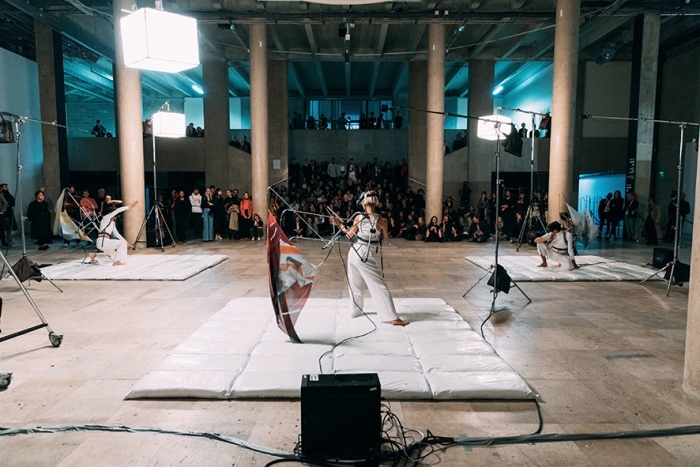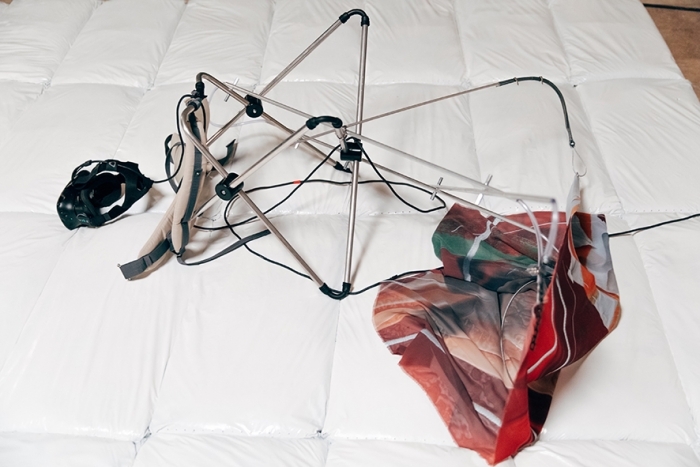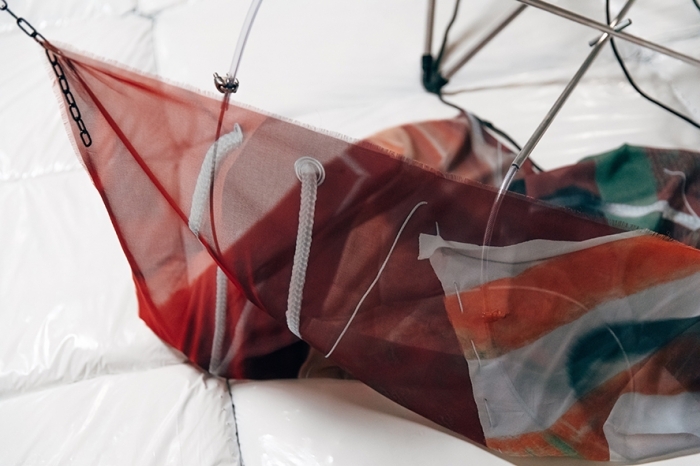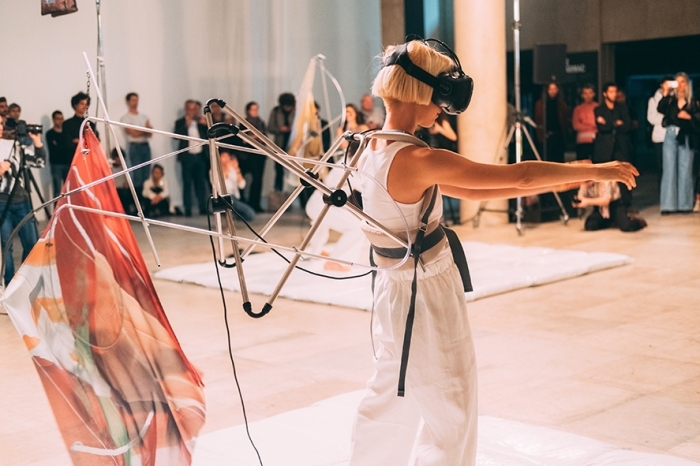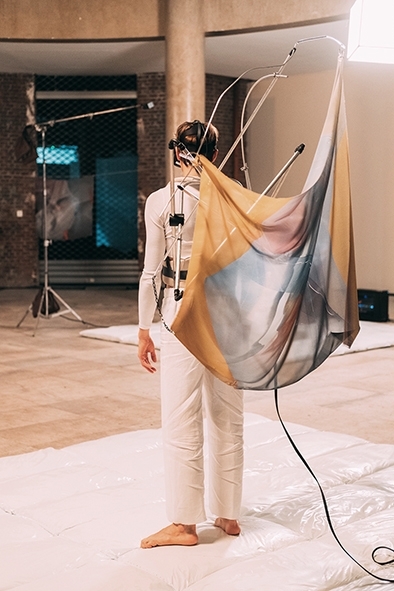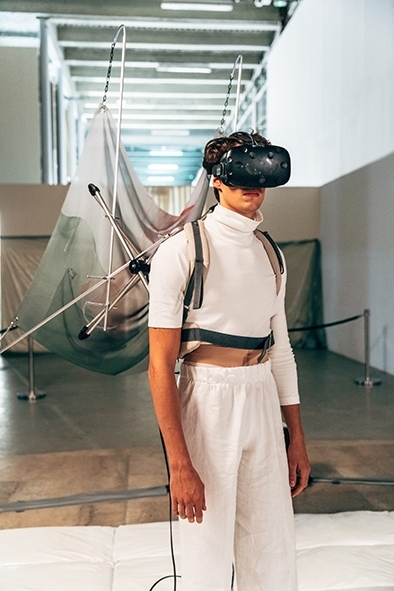Le regard ailleurs - The look elsewhere
In collaboration with Samuel Fasse, Palais de Tokyo, Paris, 2017.
Musical composition, Conception of the plan of sound architecture: JACKSON (Warp records) Realization and Virtual reality design : DV GROUP. Performers : Anna Piroska Tóth, GermainLouvet, Adrien Dantou.
Synopsis
A same world is shared, one sees the other, who has the look somewhere else, momentarily immersed in a simulated elsewhere. A territorial expansion without real expansion. In this common space, through the sound resonates the experience, lived by the one who is not really there. The carried scarfs are the possible trace, a map as a witness of the inaccessible, disconnected.
description
"The soldiers back then were equipped with printed handkerchiefs on which one could see military patterns, or even illustrations of instructions, intended for the illiterate combatants." Carré Hermès, Wikkipedia.
Three dancers are placed in a given, defined space, each of them carrying a nomadic structure on which a scarf of the collection is integrated. The scarves become traces of a possible territory. The print, composed as a trompe l’oeil, made of juxtapositions of materials becomes the reflection of their experience. Each one is wearing a virtual reality headset, in which they are immersed. There’s no contact between the performers themselves and the audience. The protagonists are slightly elevated on ordinary soil bags, spray painted in glossy white. These three distinct physical territories thus become the demarcation of their virtual space. Once off these plots the virtual reality and the sound are suspended. Disconnected, the dancers step out of this experience into another, the ("real").
The virtual reality is a 360° reproduction of the Grande Rotonde hall at the Palais de Tokyo. In this environment various elements and non-linguistic forms are inserted. The protagonists immersed in this parallel world, react spontaneously and interact instinctively with the different elements. In this partial freedom, some of their movements are influenced by the VR experience and others by some given choreographic instructions.
The gaze of the performers can go and settle on the multiple elements and forms situated inside their virtual space. Each look triggers a sound or modulates it. Inside these spaces the dancers act as generators of a musical composition.
Hence this cascade, departing from the virtual reality through the performer’s movements until the spontaneous yet constructed music composition
